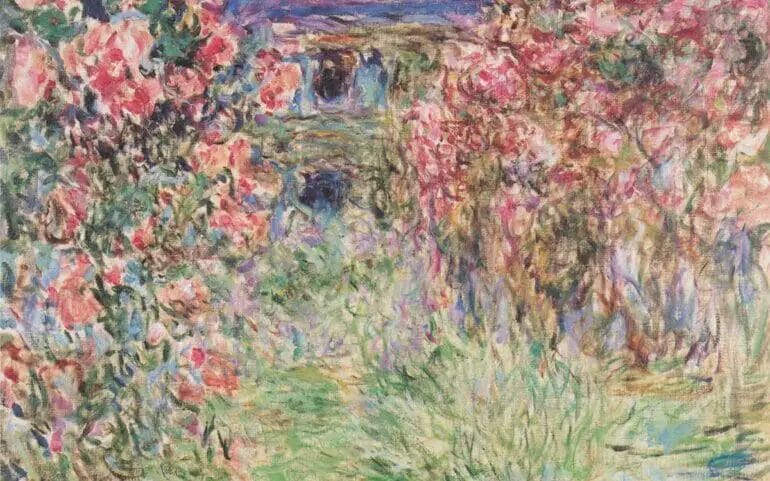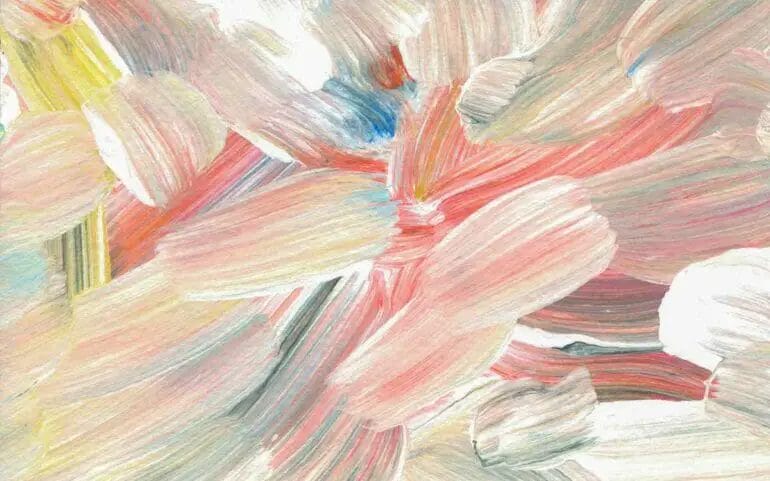Do you ever stand in front of the art aisle at the store, unsure of which paint to choose? With all of the different types of paints available, it can be tough to decide which is right for you.
In this post, we’ll take a look at three popular types of paint: Gouache, Acrylics, and Oils.
We’ll discuss the pros and cons of each type, so you can decide which is best for your individual artistic style. Let’s get started!

Gouache vs. Acrylic vs. Oil Paint
Here is a comparison between gouache paint, acrylic paint, and oil paint to enable you to choose the right paint for your next artwork.
Chemical Composition
Gouache paint, acrylic paint, and oil paint all differ in their chemical composition.
Gouache paint consists of natural pigment and a binding agent (gum Arabic) suspended in a water medium. It’s similar to watercolor and also shares some properties as watercolor – gouache paint dries to a matte finish that doesn’t reflect light, and you can wet it again when dried.
However, gouache is opaquer (denser) than watercolor because it contains chalk, hence, it’s mostly referred to as “opaque watercolor.”
Acrylic paint is basically a water-soluble plastic. Its particles of pigment are suspended in acrylic polymer emulsion and water. Just like gouache paint, acrylic paint is water-based.
But unlike gouache paint, acrylic paint dries to become a permanent, water-resistant crust, which is difficult to make acrylic paint wet again. As a matter of fact, dry acrylic paint can’t be reactivated with water but with other solvents. Acrylic paint also dries to a shiny finish.
Oil paint contains particles of pigment suspended in drying oil, usually linseed oil. This makes oil paint thicker than both acrylic and gouache paint. Traditional oil paints are not water-soluble though there are some modified oil paints on the market that are water-based.

Cleaning
Spills, stains, and/or splatters are usually unavoidable when working with any of these three paints. But cleaning off the stains shouldn’t be a difficult thing to do.
For gouache paint, cleaning is so easy. Since gouache paint is water-based paint, you can easily clean off spills or stains with a rag dampened with water. Even if the stains are dry, water will take them out.
Stains of acrylic paints are best cleaned off when they are still wet. You can easily use water and a soft cloth to clean off the wet stains of acrylic paint. Once the acrylic stains are dry, you’ll need a more powerful solvent than water to remove the stains.
Cleaning stains of oil paint is the most difficult. It will only smear if you don’t use the right solvent. The best solvent to take out stains of oil paint is Turpentine.
Drying Time
Gouache paint is the fastest drying paint of the three types of paint. Gouache paint dries within a few minutes. Acrylic paint is a fast-drying paint but doesn’t dry as quickly as gouache paint. Acrylic paint can take between 20 to 30 minutes to dry.
Oil paint is thick and dries so slowly, taking up several days (or weeks) to dry completely. This means that you need to be careful when handling oil paints. Though there are methods you can use to make oil paint dry faster, I don’t recommend any – I’ll prefer that you air-dry your oil paint artwork.

Water Resistance
Gouache paint is not water-resistant, even when dry – it’s always water-soluble. This makes gouache paint easy to clean in case of stains or splatters. Nevertheless, this quality makes gouache paint unsuitable for use for outdoor artwork – it’ll be easily destroyed by moisture or rain.
Acrylic paint, on the other hand, is only water-soluble when wet but water-resistant when completely dry. This makes acrylic paint suitable for outdoor use as it won’t be destroyed by moisture or rain once it’s dry. Don’t forget to always clean your paintbrushes right away to avoid acrylic paint drying in the ferrule.
Traditional oil paint is water-resistant when wet or dry. This means that you can continue with your oil painting outdoors, even if there is dew or rain, with relative ease. Also, oil paint is suitable for outdoor artwork as it’s unaffected by rainy or unpredictable weather. Nevertheless, cleaning up stains or splatters can be a pain.
Please note that water-soluble oil paints are not water-resistant when wet.
Malleability
Gouache paint is highly malleable. Being water-soluble means that you can easily correct mistakes done in gouache painting. But painting a layer on another layer also means the topcoat will likely mix with (or be influenced by) the base coat.
When you’re working with acrylic paint, you can always paint a layer (topcoat) on another ‘completely dry’ layer (base coat) and both layers won’t mix. This is because acrylic paint dries to a water-resistant crust.
Also, you can easily correct any mistake you make in an acrylic painting by allowing the mistake to dry and then painting over it. But acrylic paint is malleable when wet – layers of wet acrylic paints will likely mix.
Oil paint is also malleable and the slow-drying time makes matters worse. Because of the slow-drying time, you have to wait for a long time for each layer to dry if you’re working in layers or glazes.
Also, you can easily get muddy colors in oil painting if you’re not careful. To ensure that you achieve the best result, don’t always paint dark shades of oil paint on light shades.
Durability
Gouache paint is the less durable of all three paints. Over time, gouache painting will slowly fade, especially if it’s exposed to frequent sunlight. One way to preserve gouache painting is to store it in a dry, dark place.
Acrylic paint is more durable, it won’t fade or deteriorate, even with exposure to sunlight, especially if it’s sealed.
Oil paint is the most durable of them all. It can withstand rainy or unpredictable weather and last for several years – Mona Lisa by Leonardo da Vinci is a perfect example.
Toxicity
Note: Please note that toxicity in this context doesn’t apply to ingestion but to inhalation and body contact. Paints are not meant to be ingested.
Gouache paint is not toxic, perhaps because it’s water-based. But there are some brands of gouache paint with low toxicity. Generally, gouache paint is safe for artists and paintings for little children.
Most acrylic paints are non-toxic, especially those labeled non-toxic on their package. Such acrylic paint can be used safely for paintings. But there are few cases of allergies with contact with the skin.
One of the downsides of oil paint is that it produces toxic fumes. Aside from the fact that oil paint contains some toxic heavy metals, the solvents oil paint uses are toxic as well. This means that you need to be careful when handling oil paint and I recommend that you put on a nose mask.
Ability to Reactivate and Rework
Gouache paint takes the lead here as it can’t dry permanently. Gouache paint and painting can be easily reactivated and reworked no matter how dry it looks.
Even if the gouache painting is several years old, it can be easily revived with a touch of a wet paintbrush. This quality makes gouache paint more flexible than the other two paints.
For acrylic paint, the chance of reactivation is very slim once it’s dry. If acrylic paint is dry beyond a certain level, reactivating can be impossible. Even in cases where reactivation is possible, reactivating acrylic paint follows a tough process.
Amazingly, oil paint can also be reactivated. Simply add Turpentine to it and it’ll be revived. If you wipe an oil painting with a rag doused with Turpentine, the oil painting will become soft and can be reworked.
However, reactivated oil paint won’t retain the same original qualities. Also, Turpentine can be toxic when inhaled. Ensure that you use Turpentine in a well-ventilated workspace.
Comparison Table
| Properties | Gouache Paint | Acrylic Paint | Oil Paint |
|---|---|---|---|
| Binder | Gum Arabic | Acrylic emulsion | Drying oil (usually Linseed oil) |
| Water resistance | No | Yes (when dry) | Yes |
| Paint finish | Matte finish | Glossy finish | Glossy, shiny finish |
| Toxicity | Less toxic | More toxic | Most toxic |
| Durability | Less durable | More durable | Most durable |
| Drying times | More quickly | Quickly | Slowly |
| Cleaning stains | Easy to clean | Easy to clean only when wet | More difficult to clean and requires Turpentine as the solvent |
| Blendability | Easy to blend | Difficult to blend | More difficult to blend |
| Reactivation | Easy to rewet | Difficult to revive, sometimes impossible | Possible to revive with Turpentine but the quality will be lost |
| Fixing error | Easy to fix an error | Slightly difficult (doable when dry) | More difficult due to the slow dry time |
| Color changes | Colors changes occur more frequently, where some become darker and some become lighters when dry | Color changes only occur with normal/low-grade acrylic paints when dry but not with professional acrylic paints. | Color changes are not noticeable but occur gradually over a long period. |
| Best painting surfaces | Paper, illustration board | Paper, canvas, wood, metal, glass, fabrics, etc. | Canvas (though wall, paper, cardboard, and hardboard are conceivable) |
Final Verdict
Due to their different properties and attributes, gouache paint, acrylic paint, and oil paint should not be used for the same type of painting. Each of the paints has what it’s best used for.
Gouache paints flat and is suitable for thick, watercolor paper, but not canvas. Because it gives a matte finish, gouache paint works well for animation backgrounds, sketches, and/or old print illustrations.
Gouache paint is good for digital scanning, Plein-air, and incorporating into mixed-media artworks due to its fast-dry time. It’s also best for indoor artwork.
Acrylic paint is more versatile than the other two paints because it can be used to paint layers without disturbing the underlying layer. It can work on almost all surfaces that are oil- and wax-free like stone, wood, canvas, glass, ceramic, metal, plastic, cardboard, and paper.
Acrylic paint is best used for decorative painting. Generally, acrylic paint is best used for crafts, collages, and mixed-media artworks.
Finally, oil paint is best used in works where lots of soft blending are required. It’s used mainly on canvas or thicker boards. Oil paint can also be used on wood, ceramic, and some metals but these surfaces have to be primed first before application.
